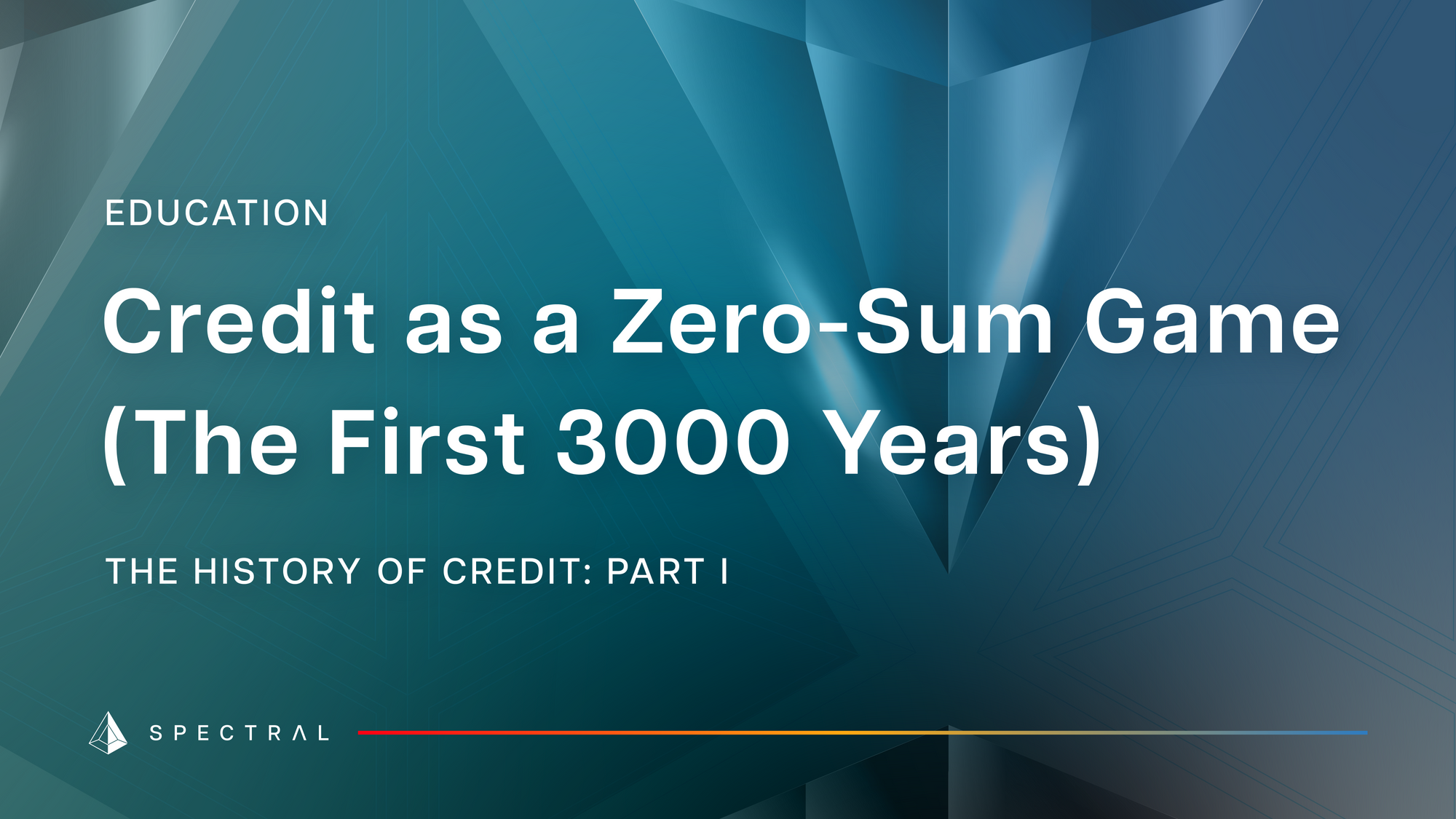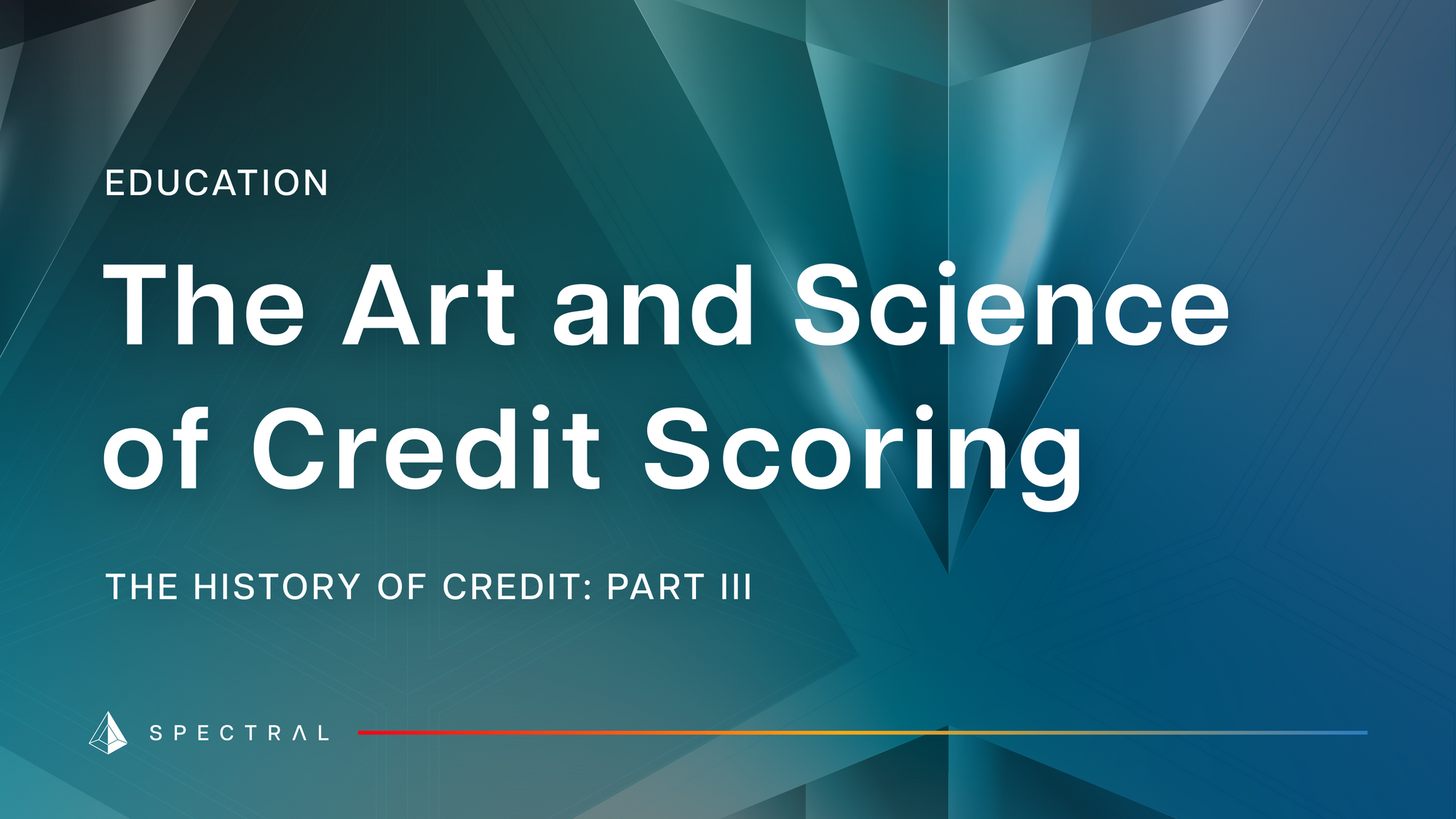Credit Intelligence and the Rise of the Bureaus
The second in our educational series detailing the history of credit, credit intelligence, and credit scoring. This article focuses on credit intelligence, which grew from informal rumor-mongering to a sophisticated surveillance empire.

Continuing our series on the History of Credit, Credit Intelligence, and Credit Scoring. This essay, the second in our series, is dedicated to the evolution of credit intelligence and the compromises traditional finance made along the way. Our previous chapter looked at the history of lending and borrowing and the gradual softening of attitudes toward consumptive credit. Our final essay will examine how credit scoring developed and take a careful look at new methods that have emerged.


The British Commonwealth and her American colonies were in a frenzy of communications during the 18th and 19th Centuries. The cost of printing plunged and newsletters, newspapers, books, and pamphlets touting strange new ideas were suddenly everywhere and seeding revolutions—and not just political revolutions, new ideas were overturning once-sleepy intellectual backwaters like accounting and demographics.
Barriers were dissolving. Trade routes now stretched all over the world and a constant stream of shipborne news fed into coastal cities like London, Manchester, and New York. Cities were getting larger: London doubled in population between 1700 and 1800 and, nourished by colonial trade and new technologies, their population was richer and hungrier as a new class of literate professionals emerged and demanded goods and services worthy of their new station. Merchants offered them store credit and startup capital for hundreds of new enterprises. But not everyone paid their bills. Cities were suddenly crawling with moneyed strangers. Merchants needed a way to keep tabs on bad customers and cheats and to share information with one another.
At first, vetting borrowers meant hiring the equivalent of a private investigator, or else assessing based on accent and appearance, or the murmurs heard in guild halls and coffeehouses. As bad debt piled up, merchants began to gather and share information about potential borrowers, a process that we’d recognize as credit intelligence gathering today.
On March 25, 1776, the first professional information bureau was born, the London Society of Guardians for the Protection of Trade against Swindlers and Sharpers (Raymond Anderson: 245), which supplied members with a list that “compiled reports recoding gossip and payment performance… [and] sent printed circulars to its members listing people thought to have been involved in fraudulent trades.” Similar societies sprouted in Manchester and the United States, although many shared the fate of the London Society of Guardians when they were sued for defamation in 1828, lost, and were dissolved.
Privacy problems with credit intelligence gathering continue to this day. In 2017, Equifax, which was formed in 1899 as the Retail Credit Company, was hacked and compromised the data of over 143 million Americans.
Despite the backlash, credit intelligence gathering gradually became institutionalized and increasingly effective as new sciences like demographics, and technologies like data processing and storage were marshaled to the cause. While this greatly increased the public’s access to credit and nourished the industrial revolution, credit intelligence gathering eroded the public’s financial privacy and created a surveillance empire that tilted power toward lenders and entrenched capital.
The first part of our series discussed the gradual shift in attitude toward borrowing, from an obligation-centric debt perspective to one that saw credit as more than a zero-sum game, where both parties were capable of benefiting from a credit agreement, provided the risks were properly accounted for and mitigated against.
Credit intelligence, on the other hand, was a trade-off between privacy and increasingly open access to credit, and led to many of the problems with accessibility and accountability that exist today.

Financial Identity Begins during Free Banking Era
Credit intelligence is largely an American phenomenon and the product of a chaotic, yet glamorous period in American history. Mark Twain set his adventure novels Tom Sawyer (1876) and the Adventures of Huckleberry Finn (1884) in 1845. Both feature feigning death and floating down the Mississippi River on makeshift rafts to dodge malevolent conmen.
The first voluntary bankruptcy legislation in the United States passed in 1841, which also happened to be the same year that Lewis Tappan created the Mercantile Agency, the first commercial information bureau which, “provided information about country merchants to New York subscribers” with seasonal updates covering subjects’ basic financials, demographics, and characters “honesty, punctuality, extravagance thrift, vices, energy/focus” (Anderson, citing Rowena Olegario). Tappan’s list was meant to tackle an annual problem: each year, farmers and small dry goods merchants from the country would travel to big cities to restock their wares.
While the city merchants had close-knit networks and knew who they could or couldn’t trust with credit in the cities, they knew nothing about their annual visitors.
The 1840s was a difficult time in American financial history. Massive speculation into northeastern timber collapsed in 1837, tanking the real estate market, sending dozens of banks into default, choking off financial lifelines, and triggering a six-year depression that was only relieved by the discovery of gold in California (and the growth of another bubble). Liquidity was scarce, particularly for farmers and factory workers outside of the major cities.
Even if you had the balance sheet to afford new stock or machinery, there often simply wasn’t enough cash available to make payments with. The problem was exacerbated considerably by the loss of the United States’ first national bank, the Bank of the United States’ which had lost its charter the year before, setting off what would come to be known as the “Free Banking Era” when the country’s 850 state-chartered banks began issuing their own specie, and the federal government retaliated by demanding payment for their land in silver or gold—essentially rendering their state-issued paper useless. (Harvard Business School). Trust was difficult during the Free Banking Era, particularly given the U.S.’s sprawling geography. It was easy to go broke in one town and reinvent yourself in another.
Gathering credit intelligence in the 19th Century was similar to newspaper reporting. Reports were sold by subscription and generated from networks of credit reporters who would make subjective assessments based on “anecdotes from people and newsprint.” (Anderson: 256)
At first, these were micro-narratives, essentially snippets of local gossip, compiled by local attorneys, who were hunting leads and submitted them to headquarters for free.
Tappan’s Mercantile Agency expanded to other US cities, increasing its archive of borrowers, eventually selling the firm to the Douglass brothers, who created outlets in other cities, including the South, renaming the firm and helping it shed founder Tappan’s hardcore anti-slavery views. The Douglass brothers sold the agency to Robert G. Dun in 1859, who “overcame Tappan’s misplaced concerns of losing its competitive advantage from putting its stock in trade in print, and of lawsuits from putting sensitive information into the public domain.” (Anderson: 253) That Dun & Company’s bitter rival John Bradstreet had begun publishing an annual report probably forced their hand.
Reports were beginning to change. The sheer number of files forced credit intelligence agencies to use commercial codes and abbreviations. These highly abbreviated indices might look like gibberish to an outsider.
Bradstreet used a six-point scale for judging creditworthiness. Dun & Company responded with a reference book grading potential business clients from A1 (unlimited credit), to 1 (unquestioned down to a grade of 4, which was very poor. (256) “In essence,” Josh Lauer writes in Creditworthiness: A History of Consumer Surveillance and Financial Identity in America, “what early commercial reporting firms sought to do was to convert an individual’s local reputation into an easily readable, centralized summary of creditworthiness for remote lenders. In the process they did something more profound: they created the modern concept of financial identity.”
By the 1870s, Dun employed 10,000 reporters and dealt with 5,000 subscriber inquiries daily. “Much of the information [shared] was abbreviated, transcribed, and/or coded by legions of office-bound employees.” (Anderson: 256) The codes allowed for compression and a measure of protection against copy pirates. New technologies such as the telegraph, batteries of typewriters, and an improved postal network quickened the tempo of intelligence gathering and dissemination. Dun and Bradstreet would eventually merge during the Great Depression (1933). They continue to exist to this day.
The financial world was forming a rudimentary nervous system: becoming aware of its surroundings and adjusting itself to the agents using it.
The Free Banking Era finally came to an end with the National Bank Act of 1863 during the Civil War, which created a uniform national currency backed by U.S. Treasury bonds.
Outside of banking, American identities were being tallied and logged in ledgers and filed away for reference in other ways. The 1850 Census was the first to count the entire population of the United States, instead of just heads of household. The Civil War (1861-1865) smoothed out problems with the currency, chartered national banks, and issued bonds to fund the Union armies, and passed the first national conscription act, requiring all men between the ages of 20 and 45 to register for the draft.
All of a sudden it wasn’t so easy to drift down the Mississippi River and form a new identity downstream.

The Age of Consumptive Credit and the Science of Lending
A lighthearted anecdote made its way into the Cleveland papers in November 1913 (Lauer: 3). John D. Rockefeller–the richest man in the world–stopped by a local department store, and when the store clerk, a young woman, tallied his goods up, he asked her to put them on his store account. The clerk sized up this Mr. Rockefeller. “Perhaps the stranger’s wig and lack of eyebrows raised her suspicion.” (3) She refused to hand over the goods without a query to the store’s credit man. The two spent a few moments tense waiting together in silence while the files for the world’s richest man were pulled, and checked to determine whether his “character,” “captial,” and “capacity” were worthy of credit and the man was who he claimed.
Rockefeller passed muster and was sent on his way. He later praised the anonymous clerk’s diligence.
At the time, the source of the story’s mirth came from the idea that the world’s richest man, worth 1.5 percent of the US’s GDP (the modern-day equivalent of $345 billion) had to endure the nail-biting moments between requesting credit, being vetted and having it granted by the store that any other American did. Today, the story also demonstrates evidence of an enormous creditworthiness assessment infrastructure that had grown between the Civil War (1865) and the beginning of the 20th Century.
For most of the 19th Century, consumer credit decisions were largely handled by individuals, often relying on snap decisions based on a consumer’s accent or dress, but blacklists of non-payers were often kept and occasionally published in local newspapers. A few consumer credit information bureaus existed by the 1870s. Josh Lauer cites a pamphlet from McKillop and Sprague, a New York commercial credit, “describing the disorganization of retail credit reporting with mocking derision, ‘two or three attempts have been made to carry the system down to the retail trade… but these have been so feeble as to render further allusion to them unnecessary.” (60) Fifteen years later, several major retail brokers existed. The real fuel for retail credit information, however, was the mail order industry, which relied entirely on information. Four industries made early and aggressive use of “Buy Now, Pay Later,” furniture, pianos, farm equipment and sewing machines. (HBS) Singer Sewing Machines’ dollar-down, dollar-a-week installment plan helped the company become one of the largest and fastest-growing manufacturers of the era.
Creditworthiness assessment was becoming more nuanced. Early on, decisions were binary, with blacklists allowing or barring credit, but keeping large dossiers on customers allowed merchants to differentiate slow payers and charge accordingly. Credit men (and after World War 1, credit women) became common in businesses that relied on their credit acumen to maintain sophisticated webs of financial support, goods, and services. The first national organization of credit workers was formed in 1896, the National Association of Credit Men (NACM) (Anderson: 258), and their methodologies and best practices began to spread. Later, workers began to work with information bureaux directly, exchanging information and expanding their dossiers on their clients and potential clients. Scientific marketing was another innovation of the early 20th Century.
Raymond Anderson highlights two significant developments: “For trade and business credit, there was a significant dependency on mercantile agencies for information.” Businesses moved away from using character as a major factor and began relying on “transparency” with one another which came in the form of standardized financial statement information. (259) The second development was the realization of how valuable it was to share information, and a variety of information exchanges sprang up, slowly at first, as merchants were wary of losing customers to their rivals, and later in earnest. In 1918, writes Anderson, “only 30 percent of the NACM’s membership made use of an interchange, but by 1920 60 percent had established bureaux, preparing reports based on information obtained centrally.” (260)
Besides the explosion in the number of consumer goods available after the Civil War and drastic improvements in production, new technologies of accounting, insurance, and even the production, storage, reproduction, and retrieval of documents allowed merchants to amass enormous dossiers on individuals.
Businesses realized that the enormous storehouses of customer information they were accumulating for credit decisions could also be used for segmenting marketplaces for advertising campaigns and generating leads. By the 1950s, “LIFE magazine marveled at the scale and efficiency of the modern credit bureau, ranking its intelligence gathering capacity alongside that of the Federal Bureau of Investigation (FBI) and the Soviet KGB.” (Lauer: 14)
By the 1960s, when credit agencies began computerizing their data stores, hundreds of millions of dossiers existed for nearly every man, woman, and child in America. They formed a kind of parallel financial dimension, where identity was reflected in ledgers of purchases, payments, and loans. Consumer privacy in America was essentially over.

Computers, Credit Cards, Big Data, and even bigger Bureaus
In 1961, the Michigan Merchants Credit Association renamed themselves the Credit Data Corporation and began “touting their use of modern technology.” This included “IBM 1401 computers and phone apparatus that provided reports 90 seconds after inquiry.” (Anderson: 265). The 1401 was the typical hub of a 1960s financial institution’s computer network, a single mainframe computer about the size of a washing machine, “specifically designed to fit the punch card environment,” (Computer History Museum). The machines replaced rooms filled with operators using accounting machines and calculators and used magnetic tape to store records. “When one of the first 1401-based banking systems was installed at the Pacific National Bank in Seattle, WA, in August of 1961, the bank increased its checking account update speed from 3 to 75 checks per minute.” (IBM) The speed of digital communications and the comparative ease of storing records made enormous record holdings possible.
One oft repeated anecdote is that the Retail Credit Company would subcontract the Welcome Wagon company to provide information about the quality of furnishings, family demographics, and other surprising information about new arrivals in a city. Lauer describes a research director’s analysis of such personal information: “The number of rooms in the home of a credit-seeker might be meaningless if taken alone, however two rooms in combination with five or more children in the family may indicate undesirable socioeconomic conditions and a high risk.” (202) In 1966, a U.S. congressional committee exploring the risks of a hypothetical federal database uncovered the extent of the private information available. They found (in what came to be known as the Ruggles Report) “a national data center in private hands without any of the safeguards to protect the citizen-consumer from abuse.” (213) The data they found was riddled with errors and citizens had little or no recourse or even insight into the reasons why they might have been denied credit.
A number of acts were passed to mitigate the damage done. In 1970, the Fair Credit Reporting Act (FRCA) ended financial investigations, and forced consolidation of the thousands of small credit agencies operating in the United States. Three major credit bureaus emerged in the United States: Equifax, which could trace its roots back to the Retailer’s Commerical Agency, formed in 1869; Experian, which grew from the Chilton Credit Company and Commercial Credit Nottingham (1897) and absorbed the aforementioned CDC, and TransUnion, which evolved from the Chicago rail industry. Outside of the U.S., CRIF (Italian), and CreditInfo (Iceland) came to dominate much of Europe and some of Asia. (Anderson: 265-266).
The interconnection of computer systems, the drastic decrease in the price of digital storage, and the development of data science principles created a wealth of new credit information to draw on and techniques for processing and understanding it (which we’ll go into in our next chapter, which is devoted to Credit Scoring). Digital storage allowed credit to replace many cash transactions, creating huge new databases of records to draw on. However, the era of interconnectedness also created many new vulnerabilities, particularly on an individual level. Personal information became valuable enough to steal and financial identities began to be swiped and taken over, often at the expense of the consumer.
The 21st century also saw the emergence of massive hacks as criminals and state actors broke into databases of personal information and either sold or hoarded tens or even hundreds of millions of passwords, identification numbers, and vital statistics. By the time the Bitcoin genesis block was mined (in 2009), financial information online was often compromised and everyday use involved a thicket of annoying password challenges, two-factor identification methods, and other nuisances.

Decentralized Identity and the promise of a new era in credit intelligence
As decentralized finance (DeFi) becomes more widely accepted, there could be another way. Blockchain technologies combining decentralized identities, zero-knowledge verification of creditworthiness, assets, and income streams could offer a replacement that doesn’t rely on mass surveillance of the public. Spectral Finance is part of a constellation of web3 builders and protocols that are attempting to build an entirely new, blockchain-based private, transparent, accessible and accountable framework for global capital markets.
Notes:
- Economists Gary Gorton and Jeffrey Zhang refer to the Free Banking Era in “Taming Wildcat Stablecoins” (2020) describing stablecoin cryptocurrencies pegged to “fiat” currencies like the United States Dollar as similar to state-chartered banks in the Free Banking Era that experienced panics and had great difficulty transacting with one another because of fluctuating prices.





